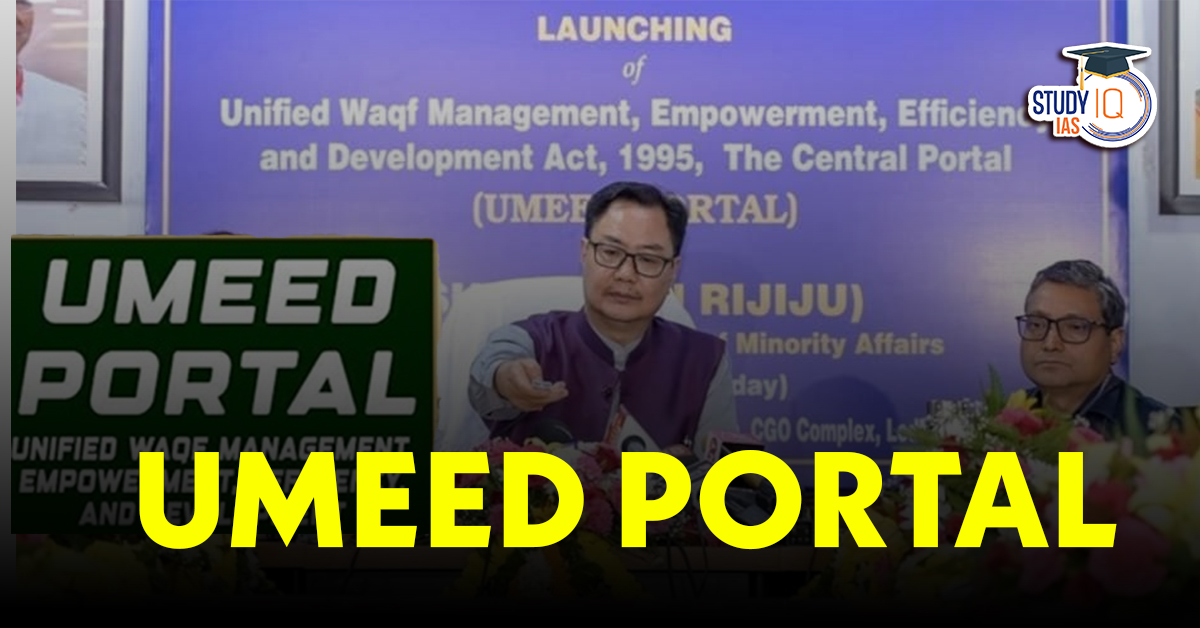Table of Contents
Context: AIMPLB criticised the UMEED portal, calling it “contempt of court” as the SC is yet to rule on the Waqf Act amendments.
About UMEED Portal
- Full Form: UMEED stands for Unified Waqf Management, Empowerment, Efficiency and Development
- Purpose: To digitise the registration and management of Waqf properties across India.
- Launched by: Union Government (Ministry of Minority Affairs).
Objectives
- Increase transparency in the form of real-time, geo-tagged digital inventory for all Waqf property records
- Accountability and fair utilisation of assets solely for underprivileged Muslims, including women and children, must be ensured
- Implement structured grievance redressal, digital lease tracking, and openness to records-public access
- Enable better governance through GIS-mapping, documentation standards, and e-governance integration
- Prevent encroachments and illegal sales.
- Streamline the administration of Waqf lands (estimated over 8 lakh properties in India).
| Waqf Act, 2025 Amendment |
|
Registration Requirements
- Within six months from the date of the portal launch, all Waqf properties are to be registered
- Registrations require property measurements, geo-tags, ownership documents, and other details
- Unregistered assets post-deadline become disputed and are referred to the Waqf Tribunals for adjudication
Key Features of UMEED Portal
- Creation of a digital inventory with geo-tagging of all Waqf properties
- Online grievance redressal system for better responsiveness
- Transparent leasing and usage tracking
- Integration with GIS mapping and other e-Governance tools
- Public access to verified records and reports
Legal and Governance Context
- Launched under provisions of the Waqf (Amendment) Act, 2025, effective April 5, 2025
- Registration of properties under women’s names cannot be classified as Waqf, though women and EWS groups remain key beneficiaries
- The portal increases judicial oversight, as under the new Act, appeals from the Waqf Tribunal can be made to the High Courts within a period of 90 days.


 Mukhyamantri Majhi Ladki Bahin Yojana, O...
Mukhyamantri Majhi Ladki Bahin Yojana, O...
 PM MITRA Parks, Objectives, Key Features...
PM MITRA Parks, Objectives, Key Features...
 Rashtriya Gokul Mission (RGM), Objective...
Rashtriya Gokul Mission (RGM), Objective...

























